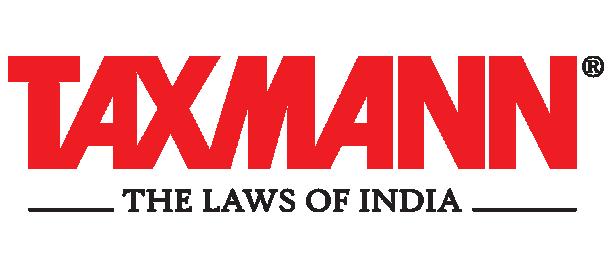
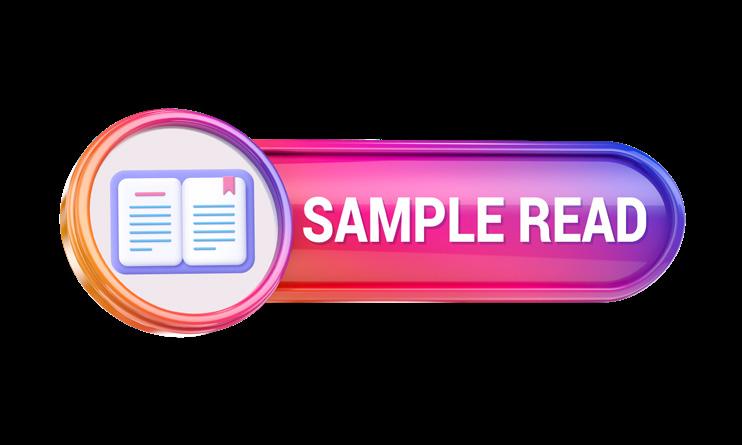

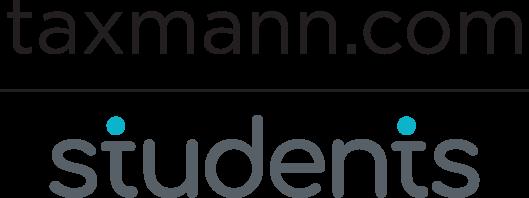
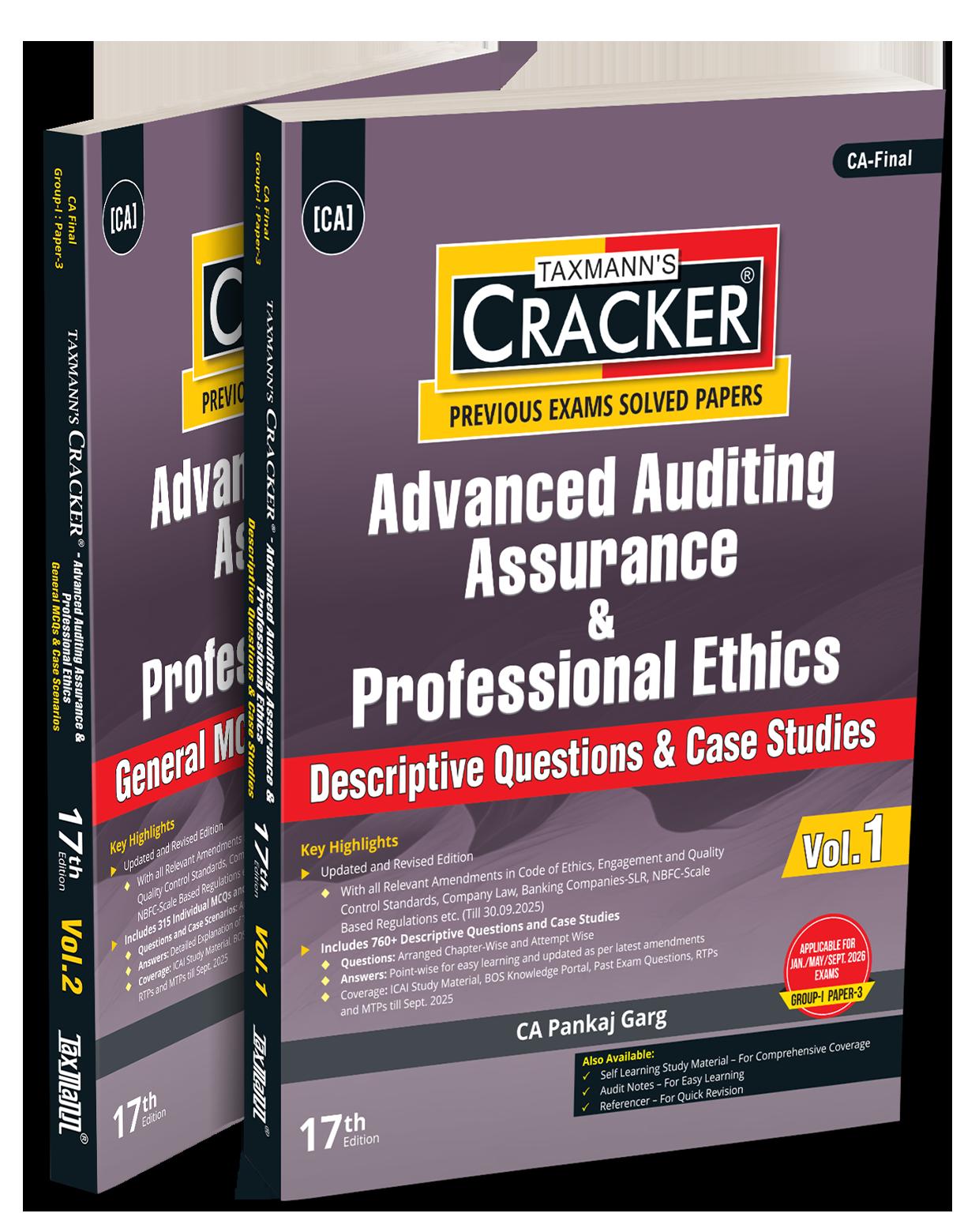
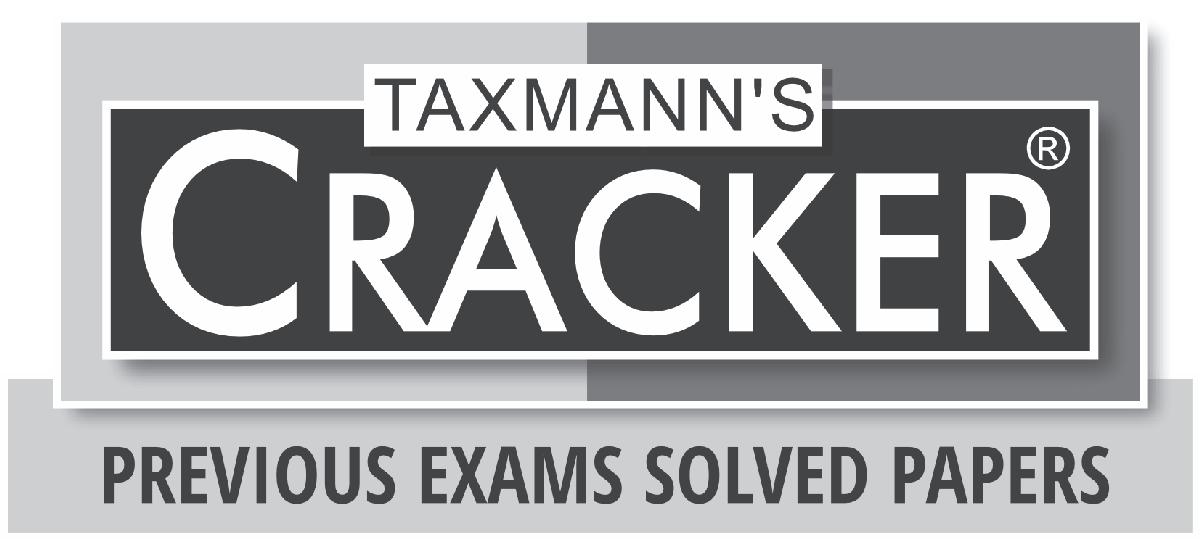




Part B: Case Scenarios













1.1 – SQC 1 “Quality Control for Firms that perform Audits & Reviews of Historical Financial Information and Other Assurance and Related Services Engagements”
Q.1 MNP & Co., a firm of auditors, is appointed by a bank to conduct stock audit of a borrower. It deputes one of its paid Chartered accountant employees, Sudhanshu, to conduct above said stock audit. He leverages it as an opportunity to prevail upon the client to get the accounts audited from their firm. He also assures client of a clean stock audit report without adverse comments as a quid pro quo. Is approach of Sudhanshu proper? How does it reflect upon quality control system of firm?
HINT: Approach of Sudhanshu is not proper. Such practices blatantly violate code of ethics and its spirit. It reflects poorly upon quality control system of firm envisaged in SQC 1 which requires that quality control policies and procedures should be documented and communicated to the firm’s personnel. It shows that firm’s personnel are not properly sensitized regarding requirements of SQC 1.
Q.2 CA M is introduced to a prospective client in a social function. He assures to visit office of CA M very soon in relation to professional work. During discussions over a cup of coffee next week, it transpires that there was a search by Enforcement Directorate in his premises about a month back resulting in recovery of huge sum of cash. The income tax department had also searched his premises in relation to bogus capital gains on penny stocks. Lamenting poor quality of services provided by his present audito r, he offers appointment as tax auditor of his five family-owned firms to CA M in lieu of handsome fees. What are the factors to be evaluated by CA M if he wants to take up the engagement?
HINT: As per SQC 1, before accepting a new engagement, integrity of client should be considered including matters that indicate involvement in money laundering or criminal activities. There has been search of ED on the said party leading to recovery of huge amount of cash. The above coupled with actions of income tax department relating to bogus capital gains on penny stocks indicates that client might be involved in money laundering activities. Therefore, offer should not be accepted.
Q.3 Beta Private Limited has approached a firm of Chartered accountants to assist them in preparation of financial statements and issue a compilation report in this regard. Does CA firm have responsibility in relation to quality control for above said engagement? Discuss with reasons.
HINT: Such kind of services fall in category of “related services”. SQC 1 is applicable to all type of engagements including engagement pertaining to “related services”.
Q.4 ABC & Associates, Chartered Accountants has a policy to accept the clients wherein the risk evaluation is conducted with respect to the Company and the promoter. XYZ Limited approached ABC & Associates. Promoter of XYZ Limited is a close associate and family friend of Mr. A, Managing Partner of ABC & Associates. XYZ Limited is in news in the previous year for certain inquiries from the regulatory authorities in relation to certain matters. The existing auditor of XYZ Limited has resigned and has created a casual vacancy. XYZ Limited is ready to offer 25% more than the existing fees and has approached ABC & Associates for appointment as Auditor. Mr. A has strong recommendation to the Firm to accept the audit.
What is your understanding of the functioning of the tone at the top of the Firm ABC & Associates, Chartered Accountants.? What are the considerations one should exercise to uphold Quality of the Firm?
SQC 1 requires that firm should establish a system of quality control designed to provide it with reasonable assurance that firm and its personnel comply with professional standards and legal and regulatory requirements. It further requires that firm’s business strategy is subject to overriding requirement of firm to achieve quality in all engagements. However, in the given situation, commercial considerations seem to be overriding factor. It reflects poorly regarding functioning at top of the firm as regards to quality control.
The managing partner of firm is close associate and family friend of promoter. The matter should have been brought to knowledge of firm in accordance with requirements of SQC 1 as it involves issue of independence of managing partner of the firm with respect to proposed audit engagement. Further, matters of inquiries from regulators and resignation of previous auditor raise question about integrity of the proposed client. SQC 1 further requires firm to consider before acceptance of an engagement that client does not lack integrity. All these factors need to be taken into consideration before accepting engagement.
Conclusion: Overall, such a situation reflects lack of proper establishment of quality control framework at top of the firm.
Considerations to be taken into account while upholding quality of firm :
(i) Firm assigns its management responsibilities so that commercial considerations do not override quality of work performed.
(ii) Firm’s policies and procedures in relation to its personnel are designed to demonstrate its overriding commitment to quality.
(iii) Firm devotes sufficient resources for development and documentation of its quality control policies and procedures.
(iv) Firm before accepting an engagement should acquire vital information about the client. Such an information should help firm to decide about integrity of Client, promoters and key managerial personnel, competence (including capabilities, time and resources) to perform engagement and compliance with ethical requirements.
Q.5 BSS & Associates is a partnership firm of Chartered Accountants which was established five years back. The firm was offering only advisory services at the beginning, however, after audit rotation and advent of GST, firm sees lot of potential in these areas also and started looking for opportunities in these areas. These services being assurance in nature, the firm required some internal restructuring and set up some policies and procedures for compliance year on year.
The firm started getting new clients for these new services and is now looking to obtain such information as it considers necessary in the circumstances before accepting an engagement with a new client, when deciding whether to continue an existing engagement, and when considering acceptance of a new engagement with an existing client. Where issues have been identified, and the firm decides to accept or continue the client relationship or a specific engagement, it has been setting up a process to document h ow the issues were resolved.
The firm is now looking to work with only select clients which are in line with the policies of the firm. The firm understands that the extent of knowledge it will have regarding the integrity of a
Chapter 1 Quality Control
client will grow within the context of an ongoing relationship with that client. With regard to the integrity of a client, you are required to give some examples of the matters to be considered by the firm as per the requirements of SQC 1. [RTP- May 19]
Or
MB & Associates is a partnership firm of the Chartered Accountants which was established seven years back. The firm is getting new clients and has also been offered new engagement services with existing clients. The firm is concerned about obtaining such information as it considers necessary in the circumstances before accepting an engagement with a new client and acceptance of a new engagement with an existing client. The firm is looking to work with only select clients to adhere to the Quality Control Standards. Guide MB & Associ ates about the matters to be considered with regard to the integrity of a client, as per the requirements of SQC 1. [Nov. 19 (4 Marks)]
Ans.: Considerations as to integrity of clients:
As per SQC-1 “Quality Control for Firms that Perform Audits and Reviews of Historical Financial Information, and Other Assurance and Related Services Engagements”, a firm should obtain such information as it considers necessary in the circumstances before accepting an engagement with a new client, when deciding whether to continue an existing engagement, and when considering acceptance of a new engagement with an existing client. Where issues have been identified, and the firm decides to accept or continue the client relationship or a specific engagement, it should document how the issues were resolved.
Considerations as to integrity of clients :
With regard to the integrity of a client, matters that the firm considers include, for example:
1. The identity and business reputation of the client’s principal owners, key management, related parties and those charged with its governance.
2. The nature of the client’s operations, including its business practices.
3. Information concerning the attitude of the client’s principal owners, key management and those charged with its governance towards such matters as aggressive interpretation of accounting standards and the internal control environment.
4. Whether the client is aggressively concerned with maintaining the firm’s fees as low as possible.
5. Indications of an inappropriate limitation in the scope of work.
6. Indications that the client might be involved in money laundering or other criminal activities.
7. Reasons for the proposed appointment of the firm and non-reappointment of the previous firm. The extent of knowledge a firm will have regarding the integrity of a client will generally grow within the context of an ongoing relationship with that client.
Q.6
You are an audit senior working for the firm Bohr a & Company. You are currently carrying out the audit of Wisdom Ltd., a manufacturer of waste paper bins. You are unhappy with Wisdom Ltd.’s inventory valuation policy and have raised the issue several times with the audit manager. He has dealt with the client for a number of years and does not see what you are making an objection about. He has refused to meet you on site to discuss those issues. As the audit manager had dealt with Wisdom Ltd. for so many years, the other partners have decided to leave the audit of Wisdom Ltd. in his capable hands. Comment on the situation outlined above.
Q.7
Ans.: Quality Control Issues in an engagement:
SQC 1 “Quality Control for Firms that perform Audits and Reviews of Historical Financial Information and Other Assurance and Related Services Engagements” requires a firm to establish the policies & procedures for dealing/resolving differences of opinion with in engagement team.
An engagement partner is usually appointed to each audit engagement undertaken by the firm, to take responsibility for the engagement on behalf of the firm. Assigning the audit to an experienced audit manager is not sufficient.
SA 220 “Quality Control for an Audit of Financial Statement”, requires that the audit engagement partner takes responsibility for settling disputes in accordance with the firm’s policy in respect of resolution of difference of opinion required by SQC 1.
In the present case, partners of the firm have decided to leave the audit in the hands of Audit manager and no engagement partner has been assigned. The lack of an audit engagement partner also means that several of the requirements of SA 220, about ensuring that engagements in relation to independence and directing, supervising and reviewing the audit are not in place. Further, the audit manager and senior have conflicting views about the valuation of inventory. This does not appear to have been handled well, with the manager refusing to discuss the issue with the senior.
Conclusion: Failure to resolve the difference of opinion is a breach of the firm’s policy under SQC 1. It indicates that the firm does not have a suitable policy concerning such disputes required by SQC 1.
M/s. NK & Co., Chartered Accountants were appointed as Statutory Auditors of Fresh Juice Limited for the FY 2025-26. The previous year's audit was conducted by M/s LP & Associates. After the audit was completed and report submitted, it was found that closing balances of last financial year i.e., 2024-25 were incorrectly brought forward. It was found that M/s NK & Co. did not apply any audit procedures to ensure that correct opening balances have been brought forward to the current period. Accordingly, a complaint was filed against NK & Co. in relation to this matter.
You are required to inform what policies are required to be implemented by NK & Co. for dealing with such complaints and allegations as required by Standard on Quality Control (SQC).
[Jan. 21 (5 Marks), MTP-March 22]
Ans.: Complaints and Allegations:
As required by SQC-1 “Quality Control for Firms that Perform Audits & Reviews of Historical Financial Information, and Other Assurance & Related Services Engagements” the firm should establish policies and procedures designed to provide it with reasonable assurance that it deals appropriately with:
(a) Complaints and allegations that the work performed by the firm fails to comply with professional standards and regulatory and legal requirements; and
(b) Allegations of non-compliance with the firm’s system of quality control.
Complaints and allegations (which do not include those that are clearly frivolous) may originate from within or outside the firm. They may be made by firm personnel, clients or other third parties. They may be received by engagement team members or other firm personnel.
As part of this process, the firm establishes clearly defined channels for firm personnel to raise any concerns in a manner that enables them to come forward without fear of reprisals.
The firm investigates such complaints and allegations in accordance with established policies and procedures. The investigation is supervised by a partner with sufficient and appropriate experience and authority within the firm but who is not otherwise involved in the engagement, and includes involving legal counsel as necessary. Small firms and sole practitioners may use the services of a suitably qualified external person or another firm to carry out the investigation. Complaints, allegations and the responses to them are documented.
Where the results of the investigations indicate deficiencies in the design or operation of the firm’s quality control policies and procedures, or non-compliance with the firm’s system of quality control by an individual or individuals, the firm shall take appropriate action.
Q.8 J.A.C.K. & Co., a Chartered Accountant firm was appointed as the statutory auditor of Falcon Ltd. after ensuring the compliance with relevant provisions of the Companies Act, 2013. Mr. Jay was the engagement partner for the aforesaid audit and prior to commencement of the audit, Mr. Jay had called for a meeting of the engagement team in order to direct them and assign them their responsibilities. At the end of meeting, Mr. Jay assigned review responsibilities to two of the engagement team members who were the most experienced amongst all, for reviewing the work performed by the less experienced team members. While reviewing the work performed by the less experienced members of the engagement team, what shall be the considerations of the reviewers?
[MTP-March 21]
Ans.: Consideration to be given while reviewing the work:
As per SQC 1, “Quality Control for Firms that Perform Audits and Reviews of Historical Financial Information and Other Assurance and Related Services Engagements”, review responsibilities are determined on the basis that more experienced team members, including the engagement partner, review work performed by less experienced team members.
While reviewing the work performed by less experienced members of the engagement team, the reviewers should consider whether:
(i) The work has been performed in accordance with professional standards and regulatory and legal requirements.
(ii) Significant matters have been raised for further consideration.
(iii) Appropriate consultations have taken place and the resulting conclusions have been documented and implemented.
(iv) There is a need to revise the nature, timing and extent of work performed.
(v) The work performed supports the conclusions reached and is appropriately documented.
(vi) The evidence obtained is sufficient and appropriate to support the report; and
(vii) The objectives of the engagement procedures have been achieved.
Q.9 HK & Co. Chartered Accountants have been auditors of SAT Ltd (a listed entity) for the last 8 financial years. CA H, partner of the firm, has been handling the audit assignment very well since the appointment. The audit work of CA H and her team is reviewed by a senior partner CA K to assure that audit is performed in accordance with professional standards and regulatory and legal requirements. CA K was out of India for some personal reasons, so this year CA G has been asked to review the audit work. In your opinion, what areas CA G should consider at the time of review. List any four areas and also comment whether firm is complying with Standard on Quality Control or not.
[July 21 (5 Marks), MTP-Oct. 22]
Ans.: Areas to be considered in review of audit work:
As per SQC 1, review responsibilities are determined on the basis that more experienced engagement team members, including the engagement partner, review work performed by less experienced team members.
Reviewers consider whether:
(a) The work has been performed in accordance with professional standards and regulatory and legal requirements;
(b) Significant matters have been raised for further consideration;
(c) Appropriate consultations have taken place and the resulting conclusions have been documented and implemented;
(d) There is a need to revise the nature, timing and extent of work performed;
(e) The work performed supports the conclusions reached and is appropriately documented;
(f) The evidence obtained is sufficient and appropriate to support the report; and
(g) The objectives of the engagement procedures have been achieved.
Compliance with SQC:
The firm should establish policies and procedures:
(i) Setting out criteria for determining the need for safeguards to reduce the familiarity threat to an acceptable level when using the same senior personnel on an assurance engagement over a long period of time; and
(ii) For all audits of financial statements of listed entities, requiring the rotation of the engagement partner after a specified period in compliance with the Code.
The familiarity threat is particularly relevant in the context of financial statement audits of listed entities. For these audits, the engagement partner should be rotated after a pre-defined period, normally not more than 7 years.
Conclusion: Firm is not complying with SQC 1 as Engagement Partner H is continuing for more than 7 years.
Q.10 PQR & Associates Chartered Accountants, is partners hip having 3 partners CA P, CA Q and CA R. PQR & Associates are appointed as Statutory Auditors of ABC Limited, a listed entity for the financial year 2025-26 and CA P is appointed as Engagement Partner for the audit of ABC Limited. Before issuing the Audit Report of ABC Limited, CA P asked CA R to perform Engagement Quality Control Review and is of the view that his responsibility will be reduced after review by CA R. Whether the contention of CA P is correct? What are the aspects that need to be considered by CA R while performing Engagement Quality Control Review for audit of financial statements of ABC Limited?
[May 22 (5 Marks)]
Ans.: Engagement Quality Control Review (EQCR):
As per SQC 1, “Quality Control for Firms that Perform Audit and Reviews of Historical Financial Information, and other Assurance and Related Services Engagements”, the review does not reduce the responsibilities of the engagement partner. Hence, contention of CA. P that after engagement quality control review by CA. R, his responsibility will be reduced, is not correct.
1.6
Aspects to be considered while performing EQCR for audit of F.S.:
CA. R needs to consider the following aspect while performing EQCR for audit of F.S. of ABC Ltd.:
(1) The engagement team’s evaluation of the firm’s independence in relation to the specific engagement.
(2) Significant risks identified during the engagement and the responses to those risks.
(3) Judgments made, particularly with respect to materiality and significant risks.
(4) Whether appropriate consultation has taken place on matters involving differences of opinion or other difficult or contentious matters, and the conclusions arising from those consultations.
(5) The significance and disposition of corrected and uncorrected misstatements identified during the engagement.
(6) The matters to be communicated to management and those charged with governance and, where applicable, other parties such as regulatory bodies.
(7) Whether working papers selected for review reflect the work performed in relation to the significant judgments and support the conclusions reached.
(8) The appropriateness of the report to be issued.
Q.11 AP & Associates, Chartered Accountants, are Statutory Auditors of XP Limited for the last four years. XP Limited is engaged in the manufacture and marketing of FMCG Goods in India. During 202 5-26, the Company has diversified and commenced providing software solutions in the area of “ecommerce” in India as well as in certain European countries. AP & Associates, while carrying out the audit for the current financial year, came to know that the company has expanded its operations into a new segment as well as new geography. AP & Associates does not possess necessary expertise and infrastructure to carry out the audit of this diversified business activities and accordingly wishes to withdraw from the engagement and client relationship. Discuss the issues that need to be addressed before deciding to withdraw. [Nov. 22 (5 Marks); MTP-Sep. 24]
Ans.: Issues to be addressed before withdrawing from audit engagement:
As per SQC 1, “Quality Control for Firms that Perform Audit and Reviews of Historical Financial Information, and other Assurance and Related Services Engagements”, firm should establish the policies w.r.t. withdrawal from engagement and communication requirements, if circumstances warrant. Policies and procedures on withdrawal from an engagement or from both the engagement and the client relationship address issues that include the following:
(a) Discussing with the appropriate level of mngt. & TCWG regarding the appropriate action that the firm might take based on the relevant facts and circumstances.
(b) If the firm determines that it is appropriate to withdraw, discussing with the appropriate level of the client’s management and TCWG withdrawal from the engagement or from both the engagement and the client relationship, and the reasons for the withdrawal.
(c) Considering whether there is a professional, regulatory or legal requirement for the firm to remain in place, or for the firm to report the withdrawal from the engagement, or from both the engagement and the client relationship, together with the reasons for the withdrawal, to regulatory authorities.
(d) Documenting significant issues, consultations, conclusions and the basis for the conclusions.
Q.12 CA Ragini is offered appointment to act as Engagement Quality Control Reviewer (EQCR) for the audit of financial year 202 5-26 of XPM Limited, a listed company operating from a small town. She
Quality Control Chapter 1
is also based in the same town and was not engaged previously to conduct audit of a listed entity. She accepts the appointment to act as EQCR. She performs the review by ticking a “Yes / No” checklist and signing on some of working papers prepared by engagement team. The audit file does not contain any material which shows that the work of EQCR is separate from the work of the engagement team. Do you agree with the approach adopted by EQCR? By commenting on issues involved in the above situation, discuss whether sh e can be held guilty of professional misconduct.
[MTP-Sep. 23, Oct. 23]
Ans: Engagement Quality Control Review (EQCR):
SQC 1 states that EQC reviewer is a partner, other person in firm (member of ICAI), a suitably qualified external person, or a team made up of such individuals with sufficient and appropriate experience and authority to evaluate objectively, before report is issued, significant judgments the engagement team made and the conclusions they reached in formulating the report.
It also states that EQC reviewer for an audit of the F.S. of a listed entity is an individual with sufficient and appropriate experience and authority to act as an audit engagement partner on audits of financial statements of listed entities.
In addition, work of EQC Reviewer involves objective evaluation of the significant judgments made by engagement team and ensuring that the conclusions reached by the team in formulating audit reports are appropriate. It is necessary for EQC Reviewer to have requisite technical expertise and experience to enable her to perform the assigned role of evaluating the work of the engagement team so that any possible misstatement can be avoided. Without ensuring the appropriate technical expertise and experience, the whole purpose of EQCR is defeated. Therefore, it was not appropriate for her to accept an appointment as ECQ Reviewer for the listed entity.
Further, SA 220 states that EQC reviewer shall document, for the audit engagement reviewed, that the procedures required by the firm’s policies on engagement quality control review have been performed. It also states that it shall also be documented that the reviewer is not aware of any unresolved matters that would cause the reviewer to believe that the significant judgments the engagement team made and the conclusions they reached were not appropriate.
In the given situation, there are no working papers to show that EQCR has done an evaluation on conclusions reached by the engagement team. Mere ticking of a Yes/No checklist and signing on some working papers of the engagement team shows that EQCR has made no such evaluation and review of work performed by the engagement team.
Conclusion: Approach of CA Ragini was not proper in performing the work of EQC Reviewer.
Professional Misconduct:
CA Ragini has allowed the issuance of an audit report of the company without carrying out due procedures as discussed above; hence she is guilty of professional misconduct under clauses 8 & 9 of Part I of the Second Schedule to Chartered Accountants Act, 1949.
Under Clause 8, a CA is held guilty of professional misconduct in case of failure to obtain sufficient information which is necessary for the expression of an opinion, or its exceptions are sufficiently material to negate the expression of an opinion.
Clause 9 is applicable in case of failure to invite attention to any material departure from the generally accepted procedure of audit applicable to the circumstances.
Conclusion: CA Ragini is guilty of professional misconduct, as discussed above.
Q.13 TPX & Co., Chartered Accountants is a large audit firm. It maintains audit documentation both electronically and in physical form (hard files). The physical files are neither scanned and incorporated into electronic files nor cross -referenced to the electronic files. Further, there are many instances where audit working papers do not contain details as to whether information was obtained from client or prepared by engagement team. How do you view above situation from point of view of quality control system in audit firm? Analyse. [MTP - March 24 , Feb. 25]
In accordance with SQC 1,” Quality Control for Firms that Perform Audits and Reviews of Historical Financial Information and Other Assurance and Related Services Engagements” the firm should establish policies and procedures designed to maintain confidentiality, safe custody, integrity, accessibility and retrievability of engagement documentation.
In the given situation, the physical files are neither scanned and incorporated in the electronic files nor cross-referenced to the electronic files. Inability to do so shows that firm has not established policies and procedures to maintain integrity of engagement documentation. Lack of ensuring the same makes it difficult to demonstrate completeness of audit files and whether these were assembled within 60 days timeframe stipulated in SQC 1.
Where engagement documentation is in paper, electronic, or other media, the integrity, accessibility or retrievability of the underlying data may be compromised if the documentation could be altered, added to or deleted without the firm’s knowledge, or if it could be permanently lost or damaged. One of the reasons for designing and implementing appropriate controls for engagement documentation in this regard is the protection of the integrity of information at all stages of engagement.
For the practical reasons, original paper documentation may be electronically scanned for inclusion in engagement files. In that case, the firm implements appropriate procedures requiring engagement teams to:
(a) Generate scanned copies that reflect the entire content of the original paper documentation, including manual signatures, cross references and annotations;
(b) Integrate the scanned copies into the engagement files, including indexing and signing off on the scanned copies as necessary; and
(c) Enable the scanned copies to be retrieved and printed as necessary.
It has also been stated that there are many instances where audit working papers do not contain details as to whether information was obtained from client or prepared by the engagement team. It is important to identify the source of the document and the information used as audit evidence to ensure its reliability. It could have potential risks of non-compliance with standards on auditing.
Q.14 STA and Associates, Chartered Accountants, is an upcoming firm and its good professional services are hired by diverse clients for assurance services. With a standing of 7 years in practice, the firm has clients in various industries like health care, education, hospitality, manufacturing and many more. With the increasing assignments, changes in regulatory compliances and appointment of new personnel, the senior partner CA T is concerned with the proper functioning of the system of Quality control within the firm. He wants to ensure that policies and procedures relating to the system of quality control of the firm are complied with properly. CA T suggests that a proper monitoring of quality control will be the right approach. Discuss the factors that are to be considered by CA T for monitoring the quality control of engagements to ensure that they comply with SQC. [Nov. 24 (5 Marks)]
Ans.: Factors to be considered for monitoring the quality control of engagements:
(i) Deciding whether QC system of the firm has been appropriately designed and effectively implemented.
(ii) Examining whether new developments in the professional standards, legal and regulatory requirements have been reflected in the QC policies.
(iii) Conducting monitoring by entrusting responsibility of monitoring process to a partner or other persons with sufficient and appropriate experience and authority in the firm.
(iv) Dealing with complaints and allegations against the firm or any employees of it of noncompliance with professional standards or appropriate regulatory requirements by a person within or outside the firm.
(v) Taking appropriate remedial actions against the personnel who did not conform to QC policies.
(vi) Taking action when deficiencies in the design or operation of the firm’s QC policies and procedures, or non-compliance with the firm’s system of QC are identified.
Q.15 XYZ and Associates, Chartered Accountants, is an audit firm, giving services to the various types of clients in the field of auditing, taxation and management consultancy. It has been doing statutory audit of B Ltd., a listed entity since last seven years. CA X who has been the engagement partner for the company since beginning has a complete idea about the strengths and weaknesses of the internal controls of the company. He maintains good relations with the management and those charged with the governance. Every year audit is completed in a cordial and healthy manner. During current year the quality control reviewer insisted to change the engagement partner for the company saying that continuation of same engagement partner poses certain audit risk and threats to the organization and advises to review the firm's policies and procedures in relation to the engagement partner. The management of the company does not wish to change the engagement partner. How do you view the above situation from the viewpoint of quality control system in audit firm in terms of requirements of SQC 1? Guide the firm in establishing the policies and procedures in respect of an engagement partner.
Ans.: Quality control system in an audit firm (SQC 1):
[May 25 (5 Marks)]
SQC 1, “Quality Control for Firms that Perform Audits and Reviews of Historical Financial Information, and Other Assurance and Related Services Engagements,” lays special emphasis on familiarity threat. Using the same senior personnel on assurance engagements over a prolonged period may impair the quality of performance of the engagement. Therefore, the firm should establish criteria for determining the need for safeguards to address this threat.
In determining appropriate criteria, the firm considers such matters as
(i) nature of the engagement, including the extent to which it involves a matter of public interest, and
(ii) length of service of the senior personnel on the engagement. The familiarity threat is particularly relevant in the context of financial statement audits of listed entities. For these audits, the engagement partner should be rotated after a pre-defined period, normally not more than seven years (except in cases where audit of listed entities is conducted by a sole practitioner). However, to ensure quality control exists in such firms and appropriate reports are issued, there is a process for mandatory peer review of such firms.
AUTHOR : PANKAJ GARG
PUBLISHER : TAXMANN
DATE OF PUBLICATION : OCTOBER 2025
EDITION : 17TH EDITION
ISBN NO : 9789364553421
NO. OF PAGES : 880
BINDING TYPE : PAPERBACK
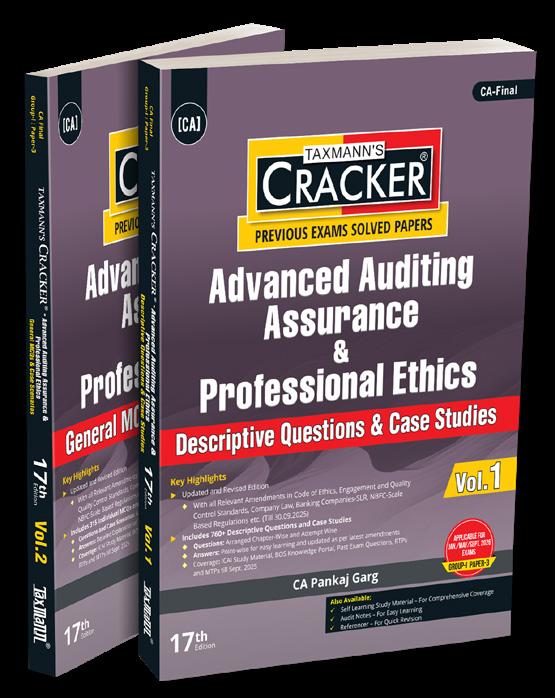
Advanced Auditing, Assurance & Professional Ethics (AAAPE/Audit) | CRACKER is a two-volume, exam-ready set for CA Final – Paper 3 (New Syllabus). Updated till 30-09-2025, it consolidates past exams with ICAI sources (Study Material, BOS Knowledge Portal, RTPs & MTPs up to Sept. 2025) in a chapter-wise and attemptwise layout. Answers are point-wise and aligned to the latest Code of Ethics, Engagement & Quality Control Standards, and key sectoral regulations (Company Law, Banking–SLR, NBFC–SBR). The set is designed to boost concept recall, pattern recognition, and presentation for consistent scoring.
The Present Publication is the 17th Edition for Jan./May/Sept. 2026 Exams. This book is authored by CA. Pankaj Garg, with the following noteworthy features:
• [Latest Amendments Integrated] Ethics, Quality/Engagement Standards, Company Law, Banking (SLR), NBFC–SBR, and other updates till 30-09-2025
• [Comprehensive Question Bank]
o Vol. 1 – 760+ descriptive questions & case studies with examiner-oriented, point-wise answers
o Vol. 2 – 315 MCQs + 69 integrated case scenarios with detailed explanations
• [Attempt-wise & Chapter-wise Organisation] for fast retrieval and focused revision
• [ICAI-mapped Coverage] of ICAI SM, BOS Portal, RTPs & MTPs (up to Sept. 2025)
• [Marks-trend Intelligence (2024–2025)] for Descriptives & MCQs to prioritise high-yield areas
• [Presentation Focus] Concise, standardised answer formats mirroring exam style